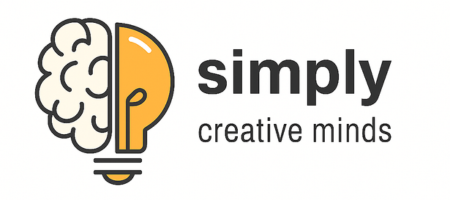The Impact of Technology on Mental Health: Pros and Cons — A Detailed Look
Technology surrounds us—from smartphones and social media to virtual reality and wearable devices. It has transformed how we communicate, work, and entertain ourselves. While technology has brought numerous benefits to mental health care and connectivity, it also poses challenges that can affect our psychological well-being.
Understanding both the positive and negative impacts can help us use technology more mindfully to support mental wellness.
Positive Impacts of Technology on Mental Health
1. Greater Access to Mental Health Resources
The internet has democratized access to mental health information and support. Teletherapy platforms like BetterHelp and Talkspace connect people with licensed therapists remotely, breaking barriers of geography, cost, and stigma.
Example:
During the COVID-19 pandemic, virtual therapy saw a massive surge, providing essential care when in-person visits weren’t possible. Meditation and mindfulness apps like Headspace and Calm offer guided sessions to reduce anxiety and promote relaxation.
2. Building Community and Reducing Isolation
Online support groups and forums such as Reddit’s mental health communities, or platforms like 7 Cups, help people share their experiences and find solidarity. This can be especially valuable for individuals in marginalized or remote communities who may lack local support.
Example:
A person struggling with depression may find encouragement and coping tips from others with similar experiences, reducing feelings of loneliness.
3. Enhanced Mental Health Monitoring and Self-Care Tools
Wearable devices like the Apple Watch can track heart rate variability, sleep patterns, and physical activity, providing data that correlates with stress and mood. Mental health apps can prompt users to track mood changes, identify triggers, and practice therapeutic exercises.
Example:
Apps like Moodpath or Daylio help users log their feelings daily and provide insights that can inform conversations with healthcare providers.
Negative Impacts of Technology on Mental Health
1. Increased Anxiety, Stress, and Information Overload
Constant connectivity means a flood of notifications, emails, and messages vying for our attention. This “always-on” culture can lead to burnout, heightened anxiety, and difficulty focusing.
Example:
Studies show that frequent checking of social media or email can spike cortisol (stress hormone) levels and fragment attention.
2. Social Comparison and Reduced Self-Esteem
Social media platforms often showcase idealized versions of life. Comparing oneself to others’ curated posts can foster feelings of inadequacy, envy, and depression.
Example:
Seeing friends post glamorous photos or professional successes might trigger self-doubt or a negative body image, especially in adolescents and young adults.
3. Sleep Disruption and Mental Fatigue
Exposure to blue light from screens inhibits melatonin production, the hormone that regulates sleep. Poor sleep quality exacerbates mood disorders, anxiety, and cognitive function.
Example:
Using smartphones or laptops late at night can delay falling asleep, leading to daytime tiredness and irritability.
How to Use Technology for Mental Health in a Balanced Way
Set Boundaries
- Use screen time management tools on your devices to limit social media or non-essential app usage.
- Designate “tech-free” periods during your day, especially an hour before bedtime.
Curate Your Digital Environment
- Follow accounts and join groups that uplift and support mental well-being.
- Unfollow or mute accounts that trigger negative feelings or stress.
Practice Mindfulness and Digital Detox
- Incorporate mindfulness apps into your daily routine.
- Take regular breaks from screens, engaging in offline activities like walking, reading, or hobbies.
Prioritize Face-to-Face Connections
- Balance virtual interaction with real-world socializing, which fosters deeper emotional connections and reduces loneliness.
Seek Professional Help When Needed
- Use technology as a gateway to access professional mental health support, but don’t rely solely on apps or online forums for serious issues.
Final Thoughts
Technology is a double-edged sword when it comes to mental health. It offers unprecedented tools for support, education, and connection but also presents risks like anxiety, social comparison, and sleep disruption. The key lies in mindful, intentional use: leveraging the benefits while mitigating the drawbacks.
By setting healthy digital boundaries, curating your online experience, and combining technology with offline self-care, you can harness the power of tech to enhance—not harm—your mental well-being.
🥗 Warm Roasted Sweet Potato & Kale Salad
✅ Vegan…
🥗 Southwest Chickpea Salad
✅ Vegan…
🥗 Classic American Garden Salad
✅ Vegan…
🥗 Mexican Street Corn Salad (Esquites, Vegan Version)
✅ Vegan…
🥗 Mexican Quinoa Salad
✅ Vegan…
🥗 Mexican Avocado & Tomato Salad
✅ Vegan…
Dharamshala – Where Mountains Meet Monks
Introduction Tucked…
Baijnath Temple – The Timeless Shrine of Lord Shiva
Introduction In…
Norbulingka Institute – A Living Museum of Tibetan Art & Craft
Introduction In…
Bir Billing – The Paragliding Capital of India
Introduction Imagine…
Masroor Rock Temples – The Ellora of the Himalayas
Introduction Hidden…
Palampur – Himachal’s Tea Capital Hidden in Pine Forests
Introduction Tucked…















